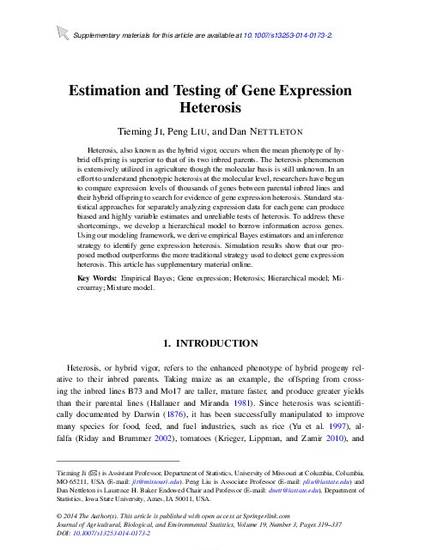
Heterosis, also known as the hybrid vigor, occurs when the mean phenotype of hybrid offspring is superior to that of its two inbred parents. The heterosis phenomenon is extensively utilized in agriculture though the molecular basis is still unknown. In an effort to understand phenotypic heterosis at the molecular level, researchers have begun to compare expression levels of thousands of genes between parental inbred lines and their hybrid offspring to search for evidence of gene expression heterosis. Standard statistical approaches for separately analyzing expression data for each gene can produce biased and highly variable estimates and unreliable tests of heterosis. To address these shortcomings, we develop a hierarchical model to borrow information across genes. Using our modeling framework, we derive empirical Bayes estimators and an inference strategy to identify gene expression heterosis. Simulation results show that our proposed method outperforms the more traditional strategy used to detect gene expression heterosis. This article has supplementary material online.
Available at: http://works.bepress.com/dan-nettleton/62/

This article is published as Ji, Tieming, Peng Liu, and Dan Nettleton. "Estimation and testing of gene expression heterosis." Journal of agricultural, biological, and environmental statistics 19, no. 3 (2014): 319-337. doi: 10.1007/s13253-014-0173-2.